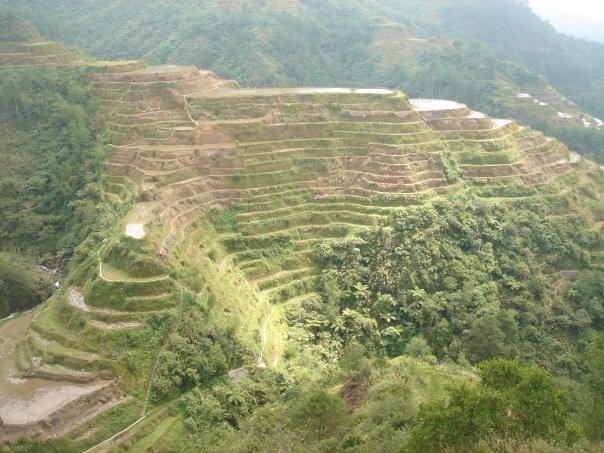Banaue Rice Terraces: When Is The Best Time To Visit?
Written by Dezza, 10 January 2023.
With the wet season behind us and summer approaching, I was thinking about somewhere unique for people to go and visit here in the Philippines. Some of the best places in the Philippines usually feature beaches, volcanoes and waterfalls. However, one of the places that are a little bit under the radar is the Banaue Rice Terraces.
The Banaue Rice Terraces, also known as the “Eighth Wonder of the World,” are located in the northern region of the Philippines. These jaw-dropping rice terraces have been carved into the mountains by the Ifugao people, over 2,000 years ago. As such, they are considered a UNESCO World Heritage site.
The amazing rice terraces are a testament to the ingenuity and hard work of the indigenous people and offer a glimpse into the rich culture and history of the Philippines. They are not only a beautiful sight to behold but also a vital source of livelihood for the local community.
I have been to the Banaue Rice Terraces a couple of times and based on my own personal experience, I would say that summertime is the best time to visit. The main reason for this is that the Banaue Rice Terraces are at such a high altitude (1,500 metres ABSL), visiting during the cooler months so the cloud cover doesn’t disrupt your view of the amazing landscape.

Wherever you go in Banaue, there are rice terraces carved into every spare bit of mountain
The other reason to visit around summertime is that the rice terraces will be full of lush greenery as the rice comes into harvest after the wet season. This really does add to the spectacle and will make your Instagram photos the envy of all your followers! Therefore, I suggest that between April and May is the best time to visit. With this in mind, that is why I’m creating a blog now to give everybody plenty of time to prepare and organise a trip up to the Banaue Rice Terraces.
So, with all that out of the way, I will be taking a look at the history, culture, and significance of these rice terraces, as well as the activities that visitors can enjoy while visiting this UNESCO World Heritage site. Let’s dive right in!
An Ancient Wonder In The Mountains
The Banaue Rice Terraces are not only an important part of the Philippines’ cultural heritage, but they also play a significant role in the lives of the local community. These terraces have been carved into the mountains by the Ifugao people over 2,000 years ago and are still in use today. They are a major source of livelihood for the local community and an integral part of their way of life.
The terraces are built using an ancient irrigation system, which allows the Ifugao people to cultivate rice on the steep mountainsides. This system is still in use today and is an impressive example of the ingenuity and hard work of the indigenous people. The rice terraces are also a great example of sustainable agriculture as they have been used for centuries without causing any damage to the environment.
Immerse Yourself In The Culture
Visitors to the terraces can witness traditional farming practices and learn about the way of life of the local community. You can also hike along the terraces and take in the breathtaking views. Visitors can also participate in traditional activities such as planting and harvesting rice.
The Banaue Rice Terraces are also a great starting point for exploring the surrounding area, which is home to a number of traditional villages, where visitors can learn about the culture and customs of the local community.
My personal favourite place is the Batad Rice Terraces. These are located in the nearby village of Batad, and are well worth visiting. From the top, visitors can enjoy a panoramic view of the rice terraces and the surrounding mountains. We caught a jeepney from town to visit this area and I have to admit, it was a fairly scary experience based on the narrow roads winding around the steep mountain tops. However, it was well and truly worth it.

The Batad Rice Terraces are my favourite with the small village at the bottom the centrepiece
Another popular activity in the area is visiting the Tappiyah Falls, where visitors can take a dip in the refreshing waters and enjoy the natural beauty of the falls. The area is also home to a number of hiking trails that lead through the lush mountain landscape and offer spectacular views of the terraces and the surrounding area.
In addition, visitors can also visit the local markets and try the delicious local cuisine, which is heavily influenced by the local rice culture. As you can imagine based on the cooler climate, soups are very popular. One of these soups is Tinumok, which is a traditional soup made from meat, vegetables, and rice. The ingredients are cooked together in a pot and served hot.
Another popular soup is Pinapaitan which is another traditional soup made from meat, such as beef or goat, and vegetables. The meat is cooked with bitter leaves such as papait, a local leafy vegetable and ginger.
Then for dessert, you can go for some Umali which is made from mashed ripe bananas and sugar. It is often served during special occasions and ceremonies.
Who Are The Ifugao People?
The Philippines is made up of so many different cultures and people with the Ifugao people being one of the oldest. The Ifugao are an indigenous group from the northern region of the Philippines, known for their unique culture and rich history. As mentioned earlier, the rice terraces, are an important part of their culture. They have been cultivating rice in these terraces for over 2,000 years, using an ancient irrigation system that is still in use today.
The Ifugao culture is heavily influenced by their agrarian way of life. They have a deep spiritual connection to the land and consider the rice terraces to be sacred. They have a rich tradition of oral history and storytelling, passed down through generations. They also have a strong sense of community and cooperation, with a complex system of social organisation and governance.

Here I am hanging out with some local Ifugao women
The Ifugao have a rich tradition of craftsmanship, particularly in the areas of woodcarving and weaving. They are known for their intricate and detailed carvings, often depicting scenes from their mythology and daily life. They also have a vibrant tradition of music and dance, with unique instruments such as the gangsa (a type of gong) and the kudlit (a bamboo flute).
The Ifugao have a rich tradition of rituals and ceremonies, many of which are related to the rice cycle and the spirits of the land. They also have a deep spiritual connection to their ancestors, and many of their rituals are related to ancestor worship.
In the past, the Ifugao have been affected by colonisation and the impact of modernisation, which has threatened their culture, way of life and rice terrace heritage. However, they continue to maintain and preserve their culture, customs and traditions through their community efforts and organisation.
Final Thoughts
So there you have it. The Banaue Rice Terraces are an important part of the Philippines’ cultural heritage and an integral part of the local community’s way of life. They offer a glimpse into the rich culture and history of the country, as well as a spectacular view of the lush mountain landscape. While there, you can check out traditional farming practices, hike along the terraces, visit the nearby attractions, and immerse yourself in the local culture, making it a unique and unforgettable experience.
Please like and share this article with friends and family or if you want to leave any comments or share your experiences, please leave your comments below. And please don’t forget to check out my related articles and videos below.
Related Articles:
Is Philippines Tourism Recovering After COVID-19?
15 Best Summer Destinations In The Philippines
The Ultimate North Luzon Road Trip
More Places In The Philippines:
Related Videos:


